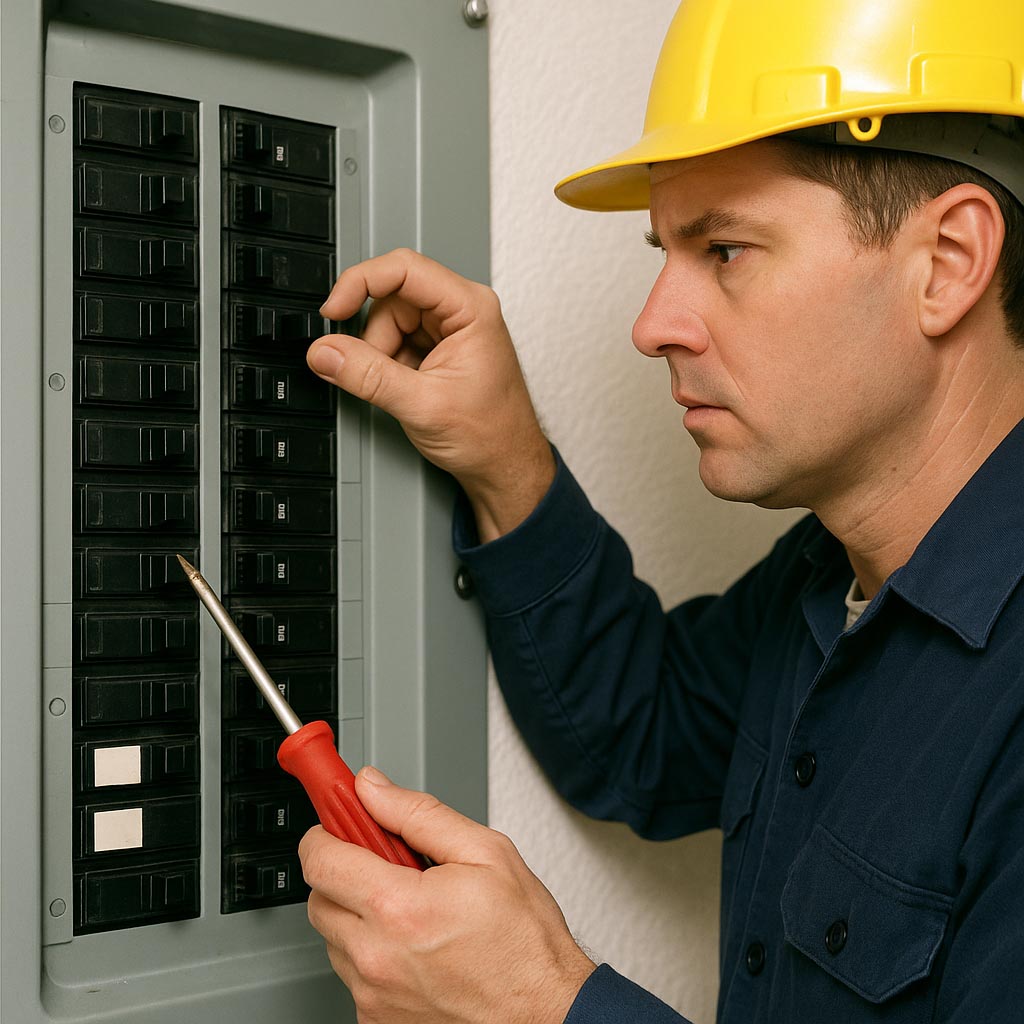When it comes to electrical safety in your home or workplace, understanding the tools and devices designed to protect you is crucial. Two of the most important safety devices are circuit breakers and Ground Fault Circuit Interrupters (GFCIs). While they both play key roles in electrical safety, they function in different ways and serve distinct purposes. Let’s delve into the differences between a circuit breaker and a GFCI.
What is a Circuit Breaker?
A circuit breaker is an essential component of an electrical system that protects the electrical circuit from damage caused by overcurrent, typically resulting from an overload or a short circuit. Here’s a closer look at how it works and why it’s important:
Functionality:
- Overload Protection: When too many devices draw power from the same circuit, the electrical load exceeds the circuit’s capacity. A circuit breaker detects this excess current and automatically interrupts the flow to prevent overheating and potential fires.
- Short Circuit Protection: A short circuit occurs when a hot wire touches a neutral or ground wire, causing a sudden surge of electricity. Circuit breakers quickly cut off power to prevent wiring damage and reduce fire risk.
Types of Circuit Breakers:
- Standard Circuit Breakers: Protect against both overloads and short circuits.
- Arc Fault Circuit Interrupters (AFCIs): Designed to detect arc faults, which can occur due to damaged or deteriorating wires, and prevent electrical fires.
Installation and Use:
- Typically installed in a main electrical panel.
- Essential for overall circuit protection in homes, commercial buildings, and industrial settings.
What is a GFCI?
A Ground Fault Circuit Interrupter (GFCI) is a specialized type of outlet designed to protect people from electric shock, particularly in wet or damp environments. Here’s how GFCIs function and why they are vital:
Functionality:
- Ground Fault Protection: A ground fault occurs when electricity takes an unintended path to the ground, which can happen if a person comes into contact with a live wire and a grounded surface. GFCIs detect even tiny differences in current between the hot and neutral wires, as small as 4 to 5 milliamps.
- Rapid Response: If a ground fault is detected, the GFCI immediately cuts off power, typically within 1/40th of a second, significantly reducing the risk of electric shock.
Types of GFCIs:
- Receptacle GFCIs: Replace standard outlets, commonly found in bathrooms, kitchens, basements, and outdoor areas.
- Circuit Breaker GFCIs: Installed in the main panel and protect entire circuits.
- Portable GFCIs: Used for temporary protection with extension cords or portable tools.
Installation and Use:
- Required by code in areas where water is present, such as bathrooms, kitchens, garages, and outdoor locations.
- Simple to install in place of a standard outlet for enhanced safety.
Key Differences Between Circuit Breakers and GFCIs
- Purpose:
- Circuit Breakers: Protect electrical circuits from damage due to overcurrent (overload and short circuits).
- GFCIs: Protect people from electric shock due to ground faults.
- Detection:
- Circuit Breakers: Detect high current levels that can damage wiring.
- GFCIs: Detect small differences in current that indicate a ground fault.
- Response Time:
- Circuit Breakers: React quickly to overcurrent situations but not as rapidly as GFCIs.
- GFCIs: React within milliseconds to cut power and prevent electric shock.
- Location:
- Circuit Breakers: Installed in the electrical panel to protect entire circuits.
- GFCIs: Installed in outlets or as part of the circuit breaker panel in specific locations prone to moisture.
Why Both Are Important
Both circuit breakers and GFCIs are integral to maintaining electrical safety but serve complementary roles. Circuit breakers ensure that your electrical system doesn’t get damaged by excessive current, thus preventing potential fires. GFCIs, on the other hand, provide crucial protection against electric shock in areas where there is a higher risk of ground faults, particularly in wet environments.
Conclusion
Understanding the distinct functions of circuit breakers and GFCIs helps in ensuring a safer electrical system in your home or workplace. While circuit breakers protect wiring and prevent electrical fires, GFCIs safeguard against potentially fatal electric shocks. Both devices are essential, and proper installation and maintenance can significantly enhance the safety of your electrical system. For professional installation or further advice on electrical safety, always consult a licensed electrician.






